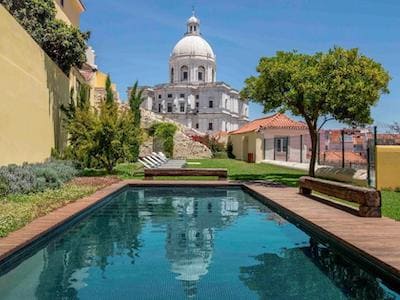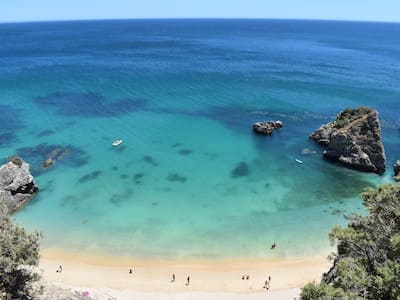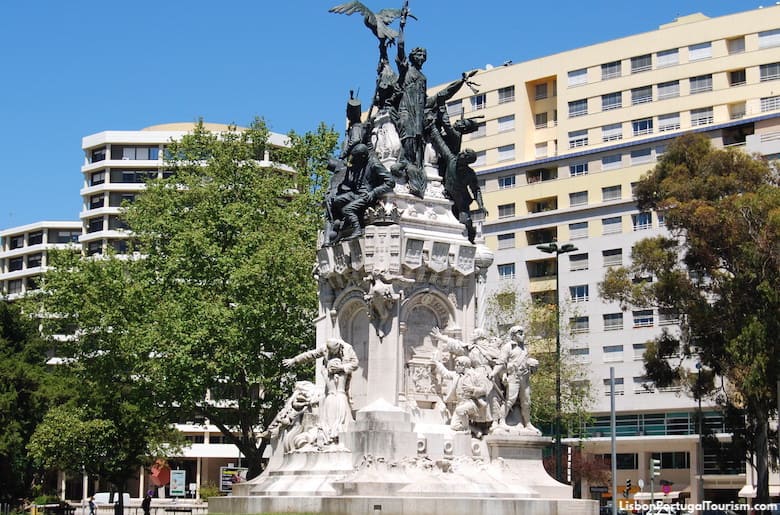
Monument at the end of Avenida da República, honoring those who died during the French invasion of Portugal in 1807
As Lisbon grew in the mid-20th century, it expanded north, away from the waterfront. Residential and business districts were born around long, broad avenues, today collectively known as Avenidas Novas ("New Avenues").
The main avenue is Avenida da República, originally lined with mansions, but many of those have been torn down and replaced by dull office blocks. The same happened in neighboring avenues, with only a few surviving examples of elegant early-20th-century architecture found on Avenida Duque D’Ávila.
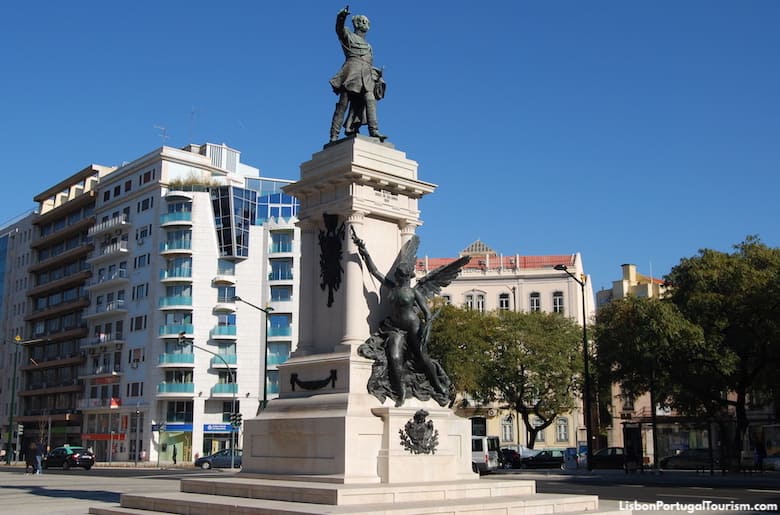
Monument to the Duke of Saldanha, in Praça Duque de Saldanha
Avenida de República starts in Praça Duque de Saldanha, the district’s main square. It’s a bustling square, much modified over the years. It too, used to be surrounded by some attractive buildings, but those were torn down for the sake of modernity and shopping malls. Those small malls are Atrium Saldanha and Monumental, which are usually packed at lunchtime on weekdays with professionals from the offices nearby. At the center of the square is a monument to the Duke of Saldanha, inaugurated in 1909. Just steps from there is one of the city's most beautiful cafés, the palatial Versailles.
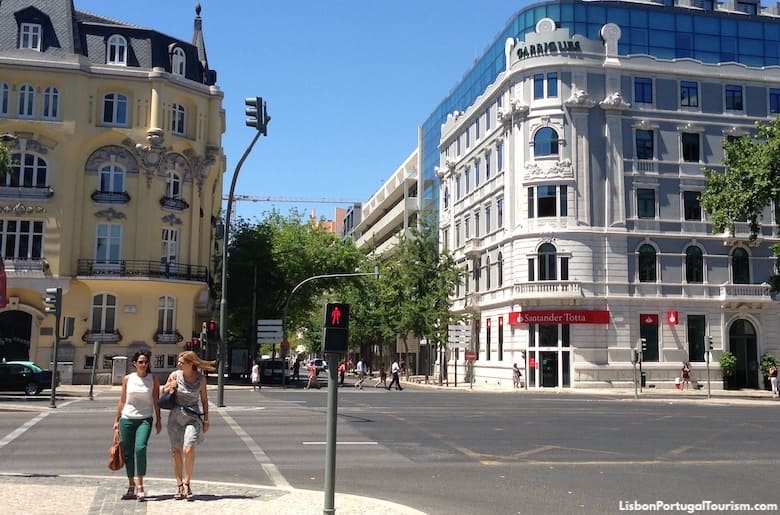
Avenida da República, the main "avenida" of the Avenidas Novas
While it may lack historic sights, this part of town still attracts quite a number of tourists, as it’s home to many hotels and to one of the city's best museums (the must-see Calouste Gulbenkian Museum).
Another of the main "Avenidas" is Avenida de Roma, which leads to Alvalade, a neighborhood laid out in the mid-1900s and crossed by the busy Avenida da Igreja. Avenida de Roma also leads to Areeiro, yet another 20th-century neighborhood that's home to a monumental fountain (see below).

Alameda Dom Afonso Henriques, one of the few green spaces by the Avenidas Novas
To the west is Benfica, best known for the soccer club. It started out as a district made up of grand estates, but today it doesn't look much different from the neighboring suburbs. It does, however, have one of Lisbon's most beautiful attractions, the Fronteira Palace.
In between are some of the city’s most popular shopping malls and good restaurants for all budgets.
What to See and Do in Avenidas Novas
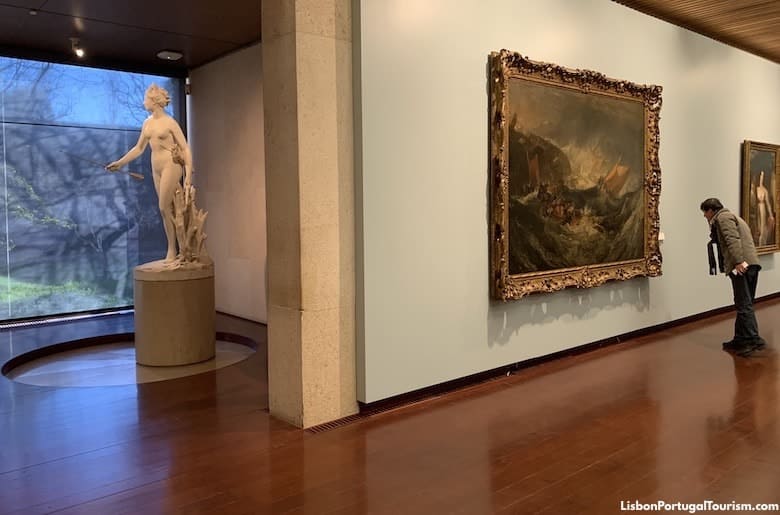
One man's goal to collect "only the best" led to the creation of this museum where everything is a masterpiece, originally from Egypt, Greece, Asia, and St. Petersburg's Hermitage. There’s also a modern collection in a separate building, connected by a delightful park. For art lovers, this is Lisbon’s must-see museum.
See the Calouste Gulbenkian Museum Visitor's Guide.
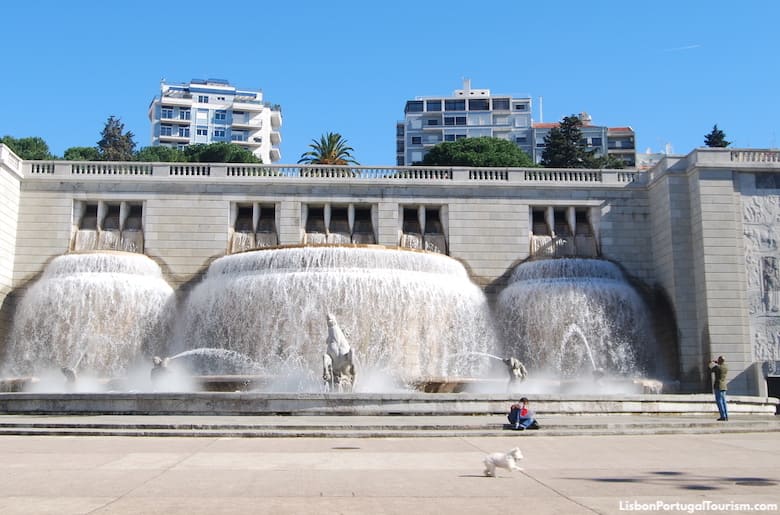
This monumental fountain gets its name from a light show that happens every evening. There’s a good view of 20th-century Lisbon from the terrace above it.
See the Fonte Luminosa Visitor's Guide.
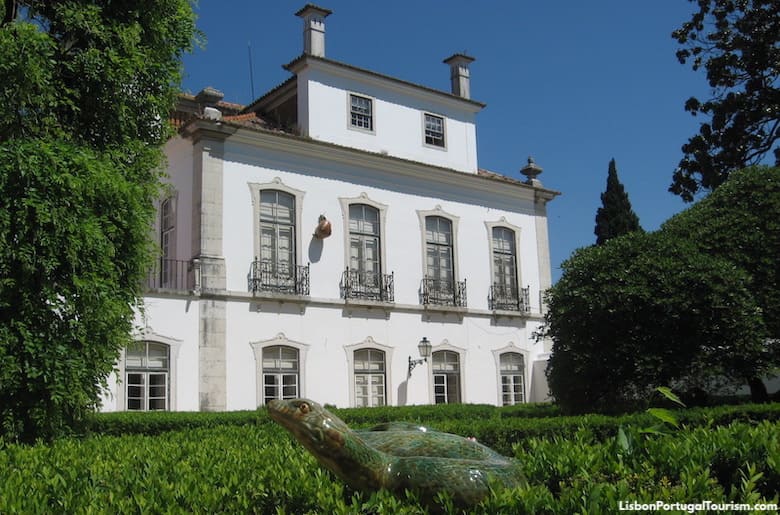
An 18th-century palace built for a nun, who just so happened to be the king’s mistress, is the main branch of the Lisbon Museum. It documents the city’s history, starting in prehistory, through the Roman, Visigothic and Moorish occupations, to modern times. The highlights inside are the former kitchen and a scale model of Lisbon before its 1755-earthquake destruction, while outside is the most beautiful attraction -- a formal garden with live peacocks and large ceramic animals created by Rafael Bordalo Pinheiro, a 19th-century artist, whose own museum (listed below) is found across the park.
See the Palácio Pimenta and Lisbon Museum Visitor's Guide.
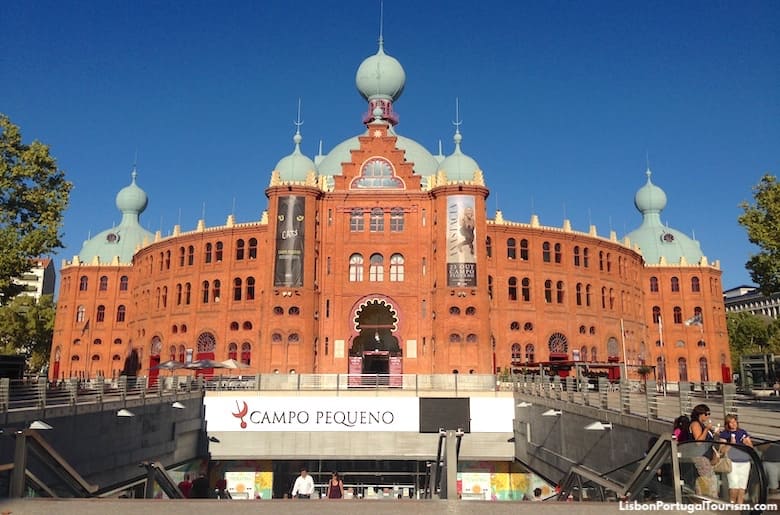
Lisbon's bullfighting arena is much more than that. It's a Moorish Revival building from 1892, made up of red brick, oriental-style domes and arches where bullfighting still takes place (every Thursday, from Easter to October), but is mostly a stage for concerts of national and international acts throughout the year. On the lower level is a small shopping mall with a food court and a multiplex cinema.
Those interested in seeing the bullfights should know that they differ from those in Spain and other countries. In Portugal, it starts with a horseman in 18th-century uniform teasing the bull with spears, followed by men on foot to further provoke the animal with a pink cape. Then come the "forcados," eight men grabbing the bull by the horns in a "man vs. beast" show. Portuguese law prohibits the killing of the bull (in public, at least, as it's so weakened that it's slaughtered out of the arena). Naturally, this spectacle is met with great opposition from animal rights groups, but the traditionalists keep it alive every year, although this is the only place in Lisbon where you can still see it. The arena stands in the center of a large tree-filled square surrounded by busy avenues, and houses a small museum focusing on the history of the building and the bullfighting tradition.
Campo Pequeno
It opens every day
www.campopequeno.com
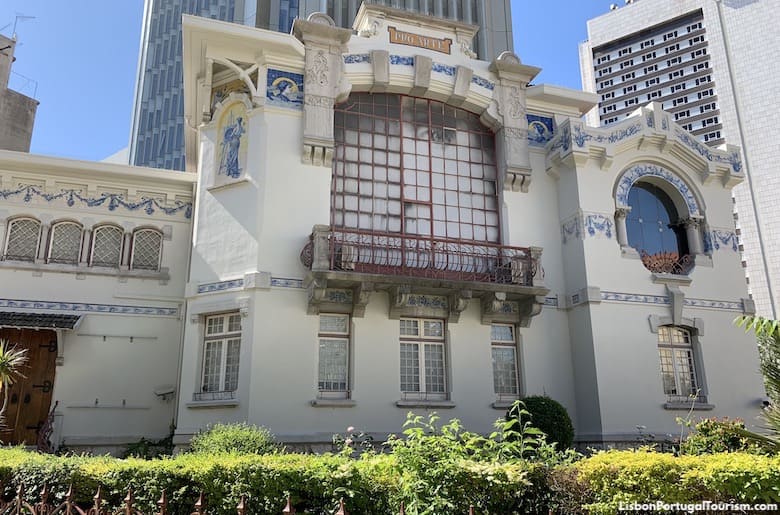
One of the rare century-old buildings that remain standing in the Avenidas Novas district is the former home of a rich art collector. It’s now a museum, displaying paintings by some of Portugal’s top 19th-century artists, precious Chinese porcelain, and 19th-century European furniture.
See the Anastácio Gonçalves Museum Visitor's Guide.
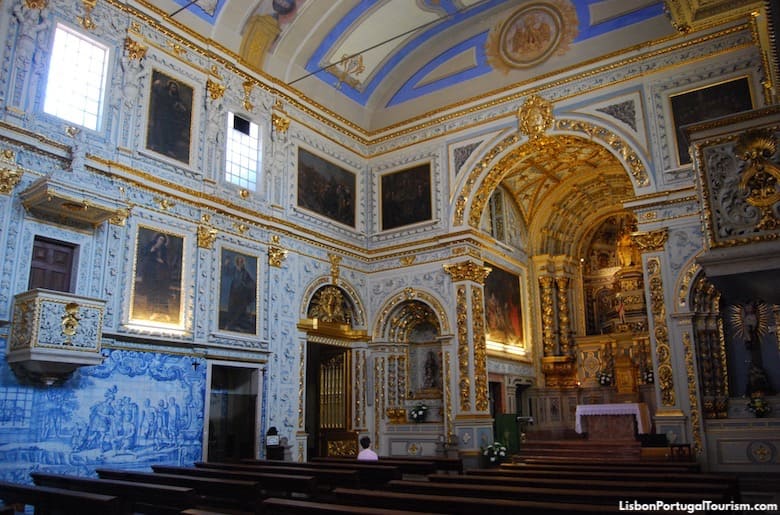
This small church is the only centuries-old attraction in Avenidas Novas. It dates back to 1652, and not only survived the urban sprawl around it, but also the 1755 earthquake. It’s hidden by the El Corte Inglés department store, and is a quintessentially Portuguese Baroque church. Large tile panels surrounded by gilding surprise visitors as they enter, as the exterior is deceptively simple. It was dedicated to St. Sebastian, whose life is illustrated on the ceiling and on the tile panels that cover the walls.
Largo de São Sebastião da Pedreira
It opens every day
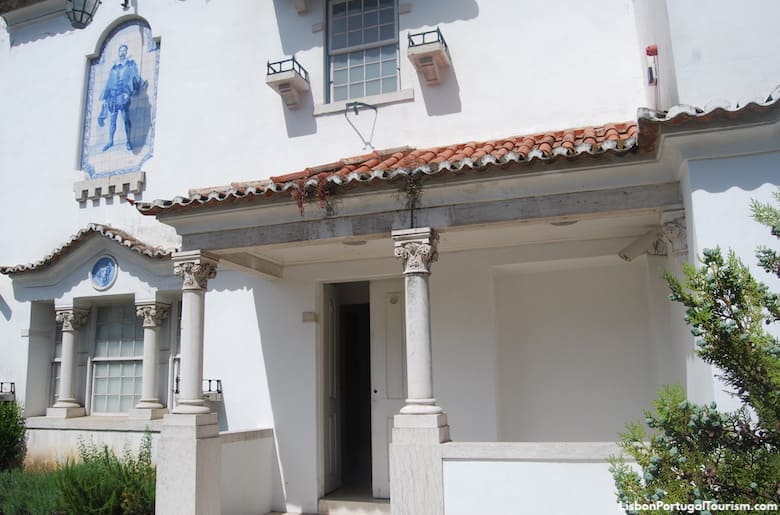
Rafael Bordalo Pinheiro was a multifaceted artist, who critiqued and satirized Portugal’s social and political life in the late 1800s, first as a journalist and caricaturist, then also as a potter and painter. He died in 1905, at the age of 59, but left behind a fascinating number of drawings, paintings, and ceramics. Much of his work uses animals and plants to convey a message, but it was his image of “Zé Povinho” (or the “everyman”) that became the most iconic. You may see many of his witty and often outrageous cartoons and colorful ceramics at this museum, housed in a small early-20th century mansion across the park from Palácio Pimenta (see above).
See the Bordalo Pinheiro Museum Visitor's Guide.
How to Get to Avenidas Novas
All four lines of the metro go through the Avenidas Novas, but it’s the yellow line that stops at the main avenues and squares. Bus 736, which departs from Cais do Sodré, also connects the area to downtown.
You may ride the metro and the bus, as well as the city's trams, funiculars and trains for free with the Lisboa Card.
Where to Stay in Avenidas Novas
Most hotels in the Avenidas Novas district are high-rises of local and international chains. While they may lack the soul of historic hotels, they’re modern properties for all budgets. The closest to a historic hotel is the Real Palácio, while the closest to a boutique hotel is the H10 Duque de Loulé. To stay in the heart of the district, close to the metro, consider the Evolution Hotel and the Olissippo Saldanha.
For more details and recommendations, see the best hotels in Avenidas Novas.

